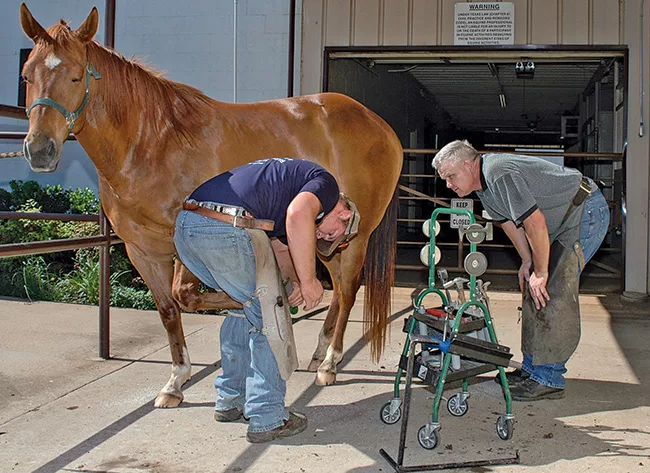American Farriers Journal
American Farriers Journal is the “hands-on” magazine for professional farriers, equine veterinarians and horse care product and service buyers.

“The hoof grows and changes daily. My philosophy is to try to encourage good hoof growth and minimize anything that would inhibit that growth or put pressure on the affected site,” he says.
His goal is to repair damaged tissue, facilitate healing and regeneration, and prevent future fractures in the epidermal structures. He tries to look at the whole picture and says there must often be a change in lifestyle for that horse.
“It’s not just management of the hoof (trimming), but also nutrition, exercise, environment, etc. This is all part of what goes into correcting those feet,” he explains.
Burton has dealt with many severe and persistent cracks that have plagued horses for years in spite of attempts to heal them. He often finds damage at the base of the tubules; there may be old scars that are difficult to get rid of, even on feet that have grown out.
“There’s often a weaker area associated with the crack, but in some instances, the scaring actually creates a stronger area. If the hoof is going to crack again, it will crack on either side of that. It will seldom crack on that old fracture line,” he explains.
“There are many types of cracks — quarter cracks, toe cracks, heel cracks, bar cracks, horizontal cracks, some that occur in the superficial structures of the…